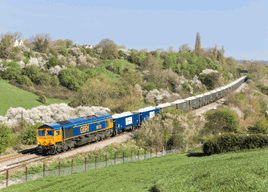 Read the peer reviews for this feature.
Read the peer reviews for this feature.
Download the graphs for this feature.
The past few weeks have been testing for the Chancellor, amid the House of Lords rebellion and subsequent tax credit defeat. Nevertheless, he reasserted his budget surplus pledge at Imperial College’s White City campus on November 9, announcing that four Government departments had agreed to 30% spending cuts over the course of this Parliament. Being an unprotected department, and given previous speculation, it came as no surprise that the Department for Transport would be one of these four.
Many from the rail industry were concerned that Network Rail’s capital expenditure would be dragged into these deals. Thankfully, Osborne showcased his commitment to UK infrastructure growth, stating: “These provisional settlements apply to the day-to-day resource spending of the central departments - they are not the capital budgets of these departments.”
The industry is now left awaiting the final outcomes of the three Network Rail reviews by Sir Peter Hendy, Dame Colette Bowe and Nicola Shaw. The Hendy assessment of the CP5 upgrade programme has drawn the most attention (for obvious reasons), as it tackles which programmes and projects are possible in this Control Period.
If the Government is to stick with its productivity plan commitments and combat taxpayer attacks on electrification schemes (as I believe it will), the focus will be on ensuring the continuation of those upgrades that benefit passengers, rather than freight. This is somewhat inevitable, given that ‘freight can’t vote’. But the lack of attention also stems from another source - a lack of understanding and experience of the economic realities of the rail freight industry.
Harsh realities of rail freight
Advisors, consultants and political figures all seem to have opinions about rail freight… what it does, what it can do, and what its challenges are. However, many don’t understand the harsh realities and foundations that underpin rail freight’s existence.
We are an industry with high fixed costs over lengthy timescales. Locomotives and wagons are leased for five- to ten-year periods. People and the systems that manage them are also difficult to reduce at short notice. In consequence, the revenues needed to support such costs require the efficient haulage of high-volume or high-tonnage cargoes. If you’re hauling empty wagons, you’re likely suffering.
This is why I’ve often argued that parcels on rail isn’t adaptable to rail freight economics. Setting aside the investments needed in station facilities, as well as regulatory incentives, the requirement for large volumes doesn’t suit the market. The best that can be hoped for is a small amount of traffic on existing passenger services, although the desperate need for space for people negates the likelihood of this happening.
The success of privatisation
This need for high volumes or tonnage has best been served by privatisation. The competitive environment has allowed us to increase total volume haulage by over 80% since the 1990s and to become more efficient, returning value to customers. A 2015 Rail Delivery Group report states that “train numbers have fallen by 30% since 2003, yet freight tonnes lifted has increased by 30%, resulting in an increase in tonnes per train of over 80%”.
Increased productivity and private investment have been key determinants to this success. McNulty’s 2011 report, Realising the Potential of GB Rail, showed the clear contrast in staff productivity between the freight sector and the more centrally controlled passenger sector since 1998, with freight experiencing a 32% improvement and passenger experiencing a considerable decline (see graph 1).
Since privatisation there has been significant investment of over £2.5 billion from rail freight operators across the industry. At GB Railfreight, we have dramatically increased our locomotive and wagon fleet since I created the company in 1999. Our £60 million investment in 21 Class 66s and 16 Class 92s last year is testament to this. We now possess a fleet of 120 locomotives and more than 1,100 wagons, operating over 1,000 trainloads per week as of this year.
However, despite growth in operations and efficiency, it’s important to remember that the market can only take rail freight so far. On top of requiring high volume or tonnage, our existence ultimately depends on the commodity markets we serve and the network capacity available. This leads me on to the challenge the industry now faces.
Decline of heavy industry
What makes rail freight so interesting is the various commodities we deal with. Each is different. Each is driven by economics that are both unique and fascinating.
Understanding the commodity markets is one of the more challenging things for a hardened railwayman to become familiar with. No longer is it just about trains - it’s about energy, it’s about construction, and it’s about manufacturing. Understand the interfaces that rail freight offers to these commodities, and you begin to understand how the industry can be exploited to efficiently support more than £1.5bn of UK benefits.
This interface is one of dependence, and we have little control over the markets of the commodities we deal with. If a market is in serious trouble, the logistics systems supporting that market are affected. For example, anybody following the news over the past couple of months will be aware of the steel crisis. Cheap steel flooding the market from China has resulted in one in six UK steel workers’ jobs being at risk. Tata has said that it will cut 1,200 jobs in the UK, and the closure of Redcar will result in 1,700 workers losing their jobs.
GBRf has been affected by the closure of the iron and steel-making facility at Redcar, where we have been operating a 24/7/365 service for Sahaviriya Steel Industries (SSI UK). The ten-year contract provided a service involving the daily transportation of 10,000 tonnes of molten iron from the blast furnace to the steel plant and then delivering the finished steel slabs to the dock for export. Our partnership with SSI has now sadly ceased as a result of global economics.
The recent spate of proposed power station closures at Eggborough and Ferrybridge (to name a couple) showcases another market that is in decline and which subsequently has an impact upon our business. Carbon emission tax increases have brought down the curtain on the ‘age of coal’ in the UK, followed by the Government’s announcement in November of its intention to close all Britain’s coal-fired power stations by 2025 and restrict their use by 2023. Unlike steel, this decline has been brought about by political intervention.
Coal used to comprise about 15% of the industry’s business. Following carbon emission tax increases, services were reduced from around 650 per week to 150 per week over a two-week period. Absorbing this has been a challenge for all freight operators. I acknowledge that the reduction was always expected, but a softer landing could be managed by Government, along with encouragement of generation at biomass facilities.
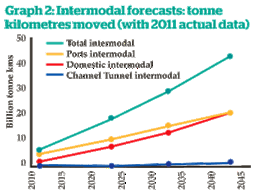 Coal and steel reflect some of the core dependable commodities of the rail freight industry, but they are now diminishing. It has been our efficient and productive operations in these dependable commodities that has driven our success, allowing for speculation in less efficient markets and enabling us to borrow money in order to invest millions of pounds of private sector money in new equipment. Without these foundations, our industry begins to lose its viability.
Coal and steel reflect some of the core dependable commodities of the rail freight industry, but they are now diminishing. It has been our efficient and productive operations in these dependable commodities that has driven our success, allowing for speculation in less efficient markets and enabling us to borrow money in order to invest millions of pounds of private sector money in new equipment. Without these foundations, our industry begins to lose its viability.
Rail freight needs to find and develop new and existing foundations. But these foundations require Government support, investment and long-term certainty.
Intermodal and aggregates
The intermodal and aggregates markets are two commodity areas that could provide the long-term foundations for the rail freight industry, moving forward.
In Network Rail’s 2013 Freight Market Study, intermodal was portrayed as the saviour for operators, with forecasts showing overall growth of over 700% by 2043, in terms of tonne kilometres (see graph 2).
And the Government’s commitment to £100bn of infrastructure spending to 2020, coupled with the creation of the National Infrastructure Commission, points to increased construction and house building opportunities across the UK, which means a boost to aggregates haulage in the short and long term.
However, the current stagnation of deep sea, domestic and international intermodal haulage highlights a problem that lies at the heart of all three markets - intelligent and integrated infrastructural investment that keeps pace with the demand freight operators are creating.
The Government has highlighted its desire to shift freight from road to rail. One of the quickest and easiest methods of doing this is via intermodal, specifically deep sea intermodal. But at the moment, only about 25% of deep sea traffic is on rail.
Freight operators have worked closely with port operators and Network Rail over the past decade, to drive as much of this traffic onto rail as possible. Looking at GBRf’s own private investment, we have introduced longer trains out of the Port of Felixstowe. In July 2013, an eight-road, 750-metre deep sea intermodal terminal opened at the Port of Felixstowe, allowing us to operate 32 platform trains from the port. The recent procurement of a further 15 ecofret triple-platform wagons means our trains will now be 45 wagons in length, better serving the demand for 40ft containers.
Market competition in deep sea intermodal has delivered growth, but it has also led to constrained capacity on the network. In order for continued growth to take place, the Government needs to support (and facilitate support of) key infrastructure schemes on the rail network.
There are two initiatives that would offer more immediate benefits to the wider industry, and help the Government move lorries off roads and onto rail. With deep sea boxes, we are simply talking about Felixstowe, Southampton and (in time) London Gateway to the Midlands, North West, Scotland and the North East (although northern ports may argue differently):
- Double-tracking into Felixstowe. At present, the Port has 50 trains of capacity, following construction of the new terminal. But the route between the Port and Ipswich can only accommodate 31 trains because of the single-track ten-mile branch line serving the Port. Plans were originally proposed to double-track some of the line, but these have fallen by the wayside and must be quickly resurrected.
- Build or increase capacity at the Port of Southampton. Available capacity into/out of the Port is controlled by a dominant operator, resulting in ineffective use of the terminal capacity for existing services. This leads to the stifling of competition, innovation and growth for a facility, and damages operations on core intermodal routes between Southampton, the West Midlands and the North West.
Looking beyond the short term, a thorough review of the intermodal rail freight market is required, to evaluate where improvements need to be made to sustain growth for the long term. Key to this assessment will be the evaluation of Mode Shift Revenue Support (MSRS), set up to assist companies with the operating costs of running rail or inland water freight instead of road, and its application to encourage traffic in the medium term.
Aggregates have the potential to be another long-term market for rail freight, with various rail-served quarries across the UK already possessing extant planning consent. Our involvement could support £100bn of government investment in construction projects up to 2020 and beyond, provided there is encouragement of rail freight on these schemes.
Contrary to deep sea box haulage, mineral sources extend across the UK, and different regions specialise in different types of sand, gravel and crushed rock. To understand what rail routes are important and require improvements, the geographical location, demand and use of each of these types of aggregate has to be evaluated.
There are three or four corridors that are of value to freight in general and to aggregates in particular. The most important of these are the Midland Main Line (MML) in the Leicester area and the Great Western Main Line in the Mendips, which support the haulage of sand and stone to London.
It was recently announced that electrification of the MML would continue, even if it is spread across both CP5 and CP6. However, the costing problems associated with major UK electrification programmes notwithstanding, there are other schemes that have a more immediate significance to the region and to the transportation of construction minerals.
Two key schemes are the four-tracking from Kettering to Bedford and capacity improvements in and around Leicester station. To the north of Bedford, the combination of freight and passenger services is constrained by the mixture of four-, three- and two-track alignments, and three-aspect signalling. Four-tracking this route would tackle many of the bottlenecks along the line and cater for future freight and passenger growth. This is far more valuable in the short term than overhead wires.
Integrated transport and logistics
Intermodal and aggregates could provide the future foundations of domestic rail freight, and it’s important that the Government and industry focus on the challenges faced by these markets specifically. Any approach to these challenges cannot be piecemeal - it needs to fit within the wider transport agenda.
Too often, significant investment is made into one mode of transport without duly considering the knock-on effect this investment will have on others - or equally how we could maximise return by joining up investment across modes of transport.
One stark example is the Government’s £1.5bn A14 Cambridge to Huntingdon Improvement Scheme. This was the first major roads project to be awarded under this spending period, demonstrating the Government’s commitment, and is no doubt a hugely important scheme to help relieve congestion and unlock growth in the region.
Yet one of the central problems with the A14 is the congestion caused by lorries. By considering transport in its entirety - road and rail - transport planners should recognise that in order to further relieve congestion and facilitate the freight modal shift from road to rail, the Government should align the Cambridge-Huntingdon project at the same time as double-tracking into Felixstowe, taking more lorries off the road.
As freight operators, we recognise that we’re part of a wider transport and logistics system. The Government’s National Policy Statement for National Networks was a major step forward, as it highlighted the importance of Strategic Rail Freight Interchanges in supporting not just freight, but logistics as a whole. Yet Black Friday last year further showcased the inefficiencies that exist across transport modes and infrastructure in delivering goods and services to customers.
In order to effectively tackle this fragmented transport approach, I would like to see the National Infrastructure Commission evaluate the long-term logistics needs of the UK, up to 2050.
Conclusion
In her first speech to the rail freight industry under this Government, Rail Minister Claire Perry asked the industry for help in better understanding what it needs from Government, what joined-up investment is needed in rail freight infrastructure, and how we can jointly raise the profile of rail freight in order to keep Britain’s economy moving.
To date, government funding through the Strategic Freight Network and Transport Innovation Fund has provided crucial capacity enhancements for freight growth, and MSRS has allowed rail freight to compete with road for intermodal traffic.
However, the decline of the coal and steel manufacturing markets has left the industry looking for alternative core commodities that will allow it to invest and grow. Opportunities exist in the intermodal and aggregates market, but public and private investment in key network infrastructure is required.
The recent opening of the new Chiltern Railways Oxford-London line highlighted the possibilities of sourcing private investment for capacity enhancements. I very much support incentivisation of private funding, if it delivers the infrastructure we need. What we must remember is that in order to carry out intelligent investment in rail infrastructure, an understanding of the economics of rail freight is imperative.
Read the peer reviews for this feature.
Download the graphs for this feature.
 Peer review: Mary Bonar
Peer review: Mary Bonar
Partner, First Class Partnerships
John Smith has made a worryingly strong case in support of his observation that there is, within Government, “a lack of understanding and experience of the economic realities of the rail freight industry”.
He talks about freight not having votes attached to it, and about fragmented transport planning decisions - citing the example of schemes to relieve the congested A14 that pay no attention to the degree that congestion is caused by lorries.
He also tells us that Rail Minister Clare Perry recently appealed to the rail freight industry for help in developing a better understanding within government of what infrastructure investment is required to support the Government and European policy to shift freight from road to rail.
In response, John has identified the new intermodal and aggregates markets that rail freight could exploit, which will require investment by the operators. But he points out that the rail freight industry often finds that attempts to shift more freight from road to rail are frustrated by lack of capacity, both infrastructure and paths. He has given specific examples of works that are required at Felixstowe and Southampton, and of other competition issues that need to be resolved.
This is obviously a difficult time for rail freight, as it feels the effects of the sudden changes in the global commodities markets in which GBRf has profitably invested up until now. We were probably all aware of the substantial closures and job losses in the UK steel industry without necessarily realising the knock-on effects for service providers such as rail freight.
The industry clearly needs to make its case more effectively and consistently during good times as well as bad. To be fair, the Rail Freight Group, Tony Berkeley and others in the House of Lords have been trying to do so for years, and publications such as RAIL and RailReview are alive to the issues. But these are specialist groups and publications, and the argument needs to be made and understood beyond the rail and transport sector.
When it comes to public sector transport investment, the tendency has been to focus on modes of transport and specifically road and rail, rather than starting with passenger and freight flows (both existing and predicted).
Ten years ago the Eddington Transport Study recommended: “The delivery chain for transport needs to adapt to changing demands; government should take a rigorous and systematic approach to policy making by focusing on objectives and high-return schemes rather than modes or technologies.”
Perhaps this will be more effective now that the Department for Transport has separate companies - Highways England focused on road and Network Rail focused on rail, and the Office of Rail and Road a potential overall regulator.
“There are no votes in freight” simply cannot be a deciding factor in 21st century Britain.
In a recent Independent Transport Commission paper, Devolution and Transport (http://www.theitc.org.uk), I argued that one of the unintended consequences of greater devolution within England is likely to be an impact on national networks and national services, as a consequence of more powerful devolved authorities focused on the economy of specific areas becoming bigger political players.
In the absence of a national transport strategy it is going to be increasingly difficult to balance local, regional and national needs, whether between passenger and freight or road, rail, air and sea.
Like John Smith, I am putting my hopes in the National Infrastructure Commission. It needs to be in a position to set and update (or at least to inspire) government to produce national strategies (and the rail freight industry will need to keep up the pressure for these to support modal shift from road to rail) that will be taken into account when planning and investment decisions are taken nationally, regionally and locally.
 Peer review: Nick Gallop
Peer review: Nick Gallop
Managing Director, Intermodality
I’ve spent a great deal of time with senior management in the rail freight industry over the past 25 years. I’ve sat through some occasionally patronising conversations where it was explained to me that “the future is all about the bulk stuff - coal, aggregates, steel, petrochemicals - and not all that other stuff like intermodal, general merchandise and parcels”. Fast forward to today - intermodal has managed to trump coal as the biggest single part of the rail freight market, just at the point that coal has fallen off the graph.
There has been a tendency since privatisation for the industry to continually ask for a “level playing field with road” (whatever that means), and to react every time Government instigates any policy measure that doesn’t automatically entitle rail freight to have a large chunk of traffic fall (or stay) conveniently in its lap.
We were told that 44-tonne lorries would be the end of the world for rail freight, which proved as wide of the mark as national rail freight targets (80% or 300% growth in ten years, depending on who was speaking at the time) or indeed the promise of the Channel Tunnel. We are now told that unless Government keeps our energy policy focused on coal, and our steelmaking capacity protected against the slings and arrows of the Free Market (the same Free Market that was supposed to free rail freight from narrow-minded state control and public sector mindsets), it will again be the end of the world.
Yes, it may very well be the case that changes to the wider economy (and the rail network itself) are falling out of step with rail freight’s traditional commodities, economics and operations. But in other sectors of the economy, the response to such changes has been (to put it bluntly) adapt or die.
Woolworths didn’t die because it was stitched up by
Government retail policy, it simply didn’t react in time to changing market conditions in the way that Aldi, Lidl and Amazon clearly have. The turnaround of Jaguar Land Rover and Mini is not due to a sudden swing from Government towards making car ownership more affordable and driving more enjoyable (or by pumping in massive amounts of public money in subsidies). Instead, both companies have learned to adopt, adapt and improve.
So, I am concerned at the suggestion that for rail to find new foundations it will require “Government support, investment and long-term certainty”. Governments never have and never will provide any of these to the rail industry for any more than a few years at a time. Beeching, Serpell, McNulty, Hendy, Bowe and Shaw highlight Government’s regular cycles of frustration and tinkering.
Frankly I’m amazed at the level of support the post-privatised railway has been given by successive administrations (of red, blue and mixed parentage). Unless the industry, including Network Rail and its supply base, can do something about cost control, Government’s patience and funding won’t be sustained. The early termination of BR’s Modernisation Plan in the 1950s is a warning from history, one from which it took the best part of 40 years for Government confidence (and investment) in rail to recover.
If the economy continues to grow, along with population and supporting infrastructure (housing, sewers, airports, railways and, yes, highways), then construction materials should still fall nicely into rail’s lap. Assuming we continue to offshore manufacturing, the ports and (eventually) the Channel Tunnel should also continue to deliver more and more intermodal traffic to the railways. The current shortage of lorry drivers, the surfeit of road congestion and the spectre of tighter vehicle emissions limits (level playing field?) should help bring more business to rail, without requiring much effort or initiative to go and find it. So the current maxim for rail freight - out of the rock or over the dock - should still allow the trainload-heavy haul economic structure to exist.
Hindsight is always 20:20, but given how much notice there’s been that coal is on the way out, where’s the industry plan for mass conversion of coal wagons for other traffic? Where’s the innovation that could turn a fleet of coal wagons into aggregates hoppers, intermodal flats, or 4x4 carriers? Where’s the marketing push into opening up new markets - such as the 155 million tonnes of food, general merchandise and parcels traffic that currently moves more than 150km (93 miles) by road?
Talking of “parcels”, there are 26 million tonnes moving around Britain by road, of which nine million move more than 150km. The market is worth over £8 billion per annum, which suggests a headline rate of £300 per tonne. Even if the true value is significantly less, surely this is at least worth a second look?
No one is suggesting that the economics of trainload coal or container traffic could be applied here. But as with GBRf’s previous role with the Royal Mail, Colas and DB (and us) have put a toe in the water, such that customers are coming forward now that they know what no one told them they could have – a perennial failing for the rail industry, which perhaps reflects the focus (some might say complacency) on “dependable” sources of traffic.
For sure, this part of the market will never plug the coal hole (pun intended, sorry), but it could provide a more profitable alternative source of traffic, in a market where suitable trains can belt along at up to 125mph to within a mile or two of most city centres, while lorries trundle along at less than half this speed on the motorway, and a quarter of this speed inside city limits. Freight trains that can perform as well on the network as passenger trains should then get a greater choice of paths.
Intercity Railfreight (with which I now have a part-time proper job) has secured a parcel-load business with East Midlands Trains, which will be expanded onto another TOC network from the end of this month. Having proved the parcel-load/TOC business can work even at low volumes, work is now in hand to expand this to an intermediate model and on towards dedicated trainload services, using a large amount of “windfall” rolling stock that will be displaced by the Hitachi IEPs. One of the big property developers has now made space for an “express freight interchange” within their proposals for a major new distribution park, complementing the proposed on-site intermodal facilities.
I’ve always admired the work that GBRf has done, coming into existence without the momentum given to the ex-BR companies at privatisation. Since then, GBRf has proved to be a valuable presence in challenging the larger incumbents, through innovative measures such as giving drivers a greater range of skills and technology, repositioning them as frontline ambassadors for rail freight at the sharp end. It would be great to see that pioneering spirit of innovation continue in cracking open new markets and/or revisiting old ones, even if this will require short-term pain and adjustment as core markets decline and traditional business models are increasingly challenged.
If the rail freight industry is to offer more than a “we woz robbed” epitaph as its historically “dependable” sources of traffic dry up, a new era of enlightenment is required from the industry, as much as Government keeping the faith with policy and funding support. This is not the time for sentimentality or blaming government policy while simultaneously looking for it to prop up indefensible markets in coal and steel.
 Peer review: Chris MacRae
Peer review: Chris MacRae
Manager – Rail Freight Policy, Freight Transport Association
We all know that Government’s response to a crisis is to commission a review. But there are genuine issues in how infrastructure enhancement schemes - both passenger and freight - are (or in cases are not) being delivered, both physically and in respect of budget.
So we currently have three reviews into the railways: Sir Peter Hendy reviewing NR’s delivery of Control Period 5 infrastructure enhancements; Dame Colette Bowe’s review of Network Rail’s planning and costing of enhancement projects; and Nicola Shaw’s review of the longer-term future shape and financing of Network Rail.
The FTA fundamentally supports the aims and objectives of the Strategic Freight Network Fund to enhance Britain’s mixed traffic railway network for the needs of freight, so as to improve economic competitiveness and connectivity.
Projects delivered under this fund in previous Control Periods have helped to release some of the constraints on rail freight and Britain’s supply chains. It is clearly important that this Fund (and the management of the delivery of the projects authorised in it) continues to deliver the economic and societal benefits that have already been witnessed in earlier Control Periods, such as gauge clearance on main and diversionary routes into and out of the major haven gateway ports.
A key challenge currently is for Network Rail to manage within time and within budget the delivery of increasingly complex multi-disciplinary network enhancement projects dealing with capacity, train lengthening and train journey time improvements on an end-to-end corridor basis for freight, interacting with other route-wide schemes where scheme output interdependencies exist. It is vital that these projects are seen to deliver optimal outcomes for the public expenditure that they represent, and in doing so deliver benefits for the British economy and trade connectivity.
Therefore, FTA supports a review of the current projects with regard to their deliverability and costs and timelines, in order to ensure tangible deliverables within the project timelines and continuing support from public funders for the enhancement of the rail network for freight.
In a review of the shape and financing of the infrastructure provider and its roles, a key issue for FTA is the implications for rail freight, given that it operates across existing Network Rail geographical route boundaries. It is therefore important that any consultation on the system operator role within any Network Rail restructuring recognises that there are issues regarding how that would tie up with disruptive engineering possession planning and diversionary routing and contingency planning across route borders - for example, Southampton to Hull or Southampton to Coatbridge Intermodal trains.
FTA is engaged in developing the ‘Agenda for More Freight by Rail’, which sets out the industry challenges set by major shippers for rail to win more freight market share from other modes of transport. A copy can be found on the website at http://www.fta.co.uk/export/sites/fta/_galleries/downloads/rail_freight/14094_agenda_for_more_guide.pdf
At the same time, the Office of Rail and Road has published a consultation: System operation – making better use of the rail network. System operation is about how Network Rail operates the rail network and how decisions by both NR and others are made about the use of this network and its expansion over time.
The consultation states that the trend towards regional devolution of railway investment funding decisions (including the possibility of greater roles for local transport authorities and devolved administrations), as well as the possibility of having more rail infrastructure (for example, HS2), increases the importance of co-ordination between routes and of investment decisions. Increased transparency and a better understanding of the effects of decisions can help support this. In parallel, Network Rail is consulting on an initial system operation “dashboard” to improve the information available about how the rail network is operated. The consultations closed on October 16.
Clearly there are issues for freight in how this is done. Certainly greater devolution is the route of travel (for example, the development of Transport for the North, West Midlands Connect, Transport for London and the politically most devolved of all - Transport Scotland), and deeper devolution means the need for a more crucial role of the system operator, completely independent of train operators.
The Shaw Review makes further devolution inevitable, with partial or full privatisation of NR openly being discussed, potentially in a concession format. This means there is a need for a network system operator role to carry out central capacity and timetable management work - this is especially important for freight, which operates across the boundaries of the routes that are likely to become more devolved (sea ports are on the coast and cities are mostly inland !)
The system operator has to be independent of train operating companies (a requirement of EU Directives), independent of devolved route infrastructure managers, and with contingency empowerment such as how to deal with the operational consequences of a key route closure - following a landslip, for example. The system operator must not, however, be a proxy for an independent regulator (that is also required in EU Directives).
While infrastructure maintenance may be a core activity for a devolved route infrastructure manager, long-term planning is clearly a system operator function. But with the idea of infrastructure concessions and Alliances (such as ScotRail/Network Rail Scotland) things become less clear. There will be a need for statutory duties and guidance to be given to both devolved route infrastructure managers and the system
operator. From a freight perspective this should include a duty to promote rail freight. This affects such practical issues as gauging standards for freight wagons/containers, timetabling rules, customer rail freight facility connection agreements, and enhancement projects that go across route borders (such as the Felixstowe to Nuneaton freight upgrade project). It must be remembered that the McNulty Report into the value for money of Britain’s railways did want devolution of all but the most high-level functions of Network Rail, such as high-level co-ordination and capacity allocation.
This all comes at a time of change in the railways, with the Hendy Review, the Bowe Review, and the Treasury-led Shaw Review, plus an ORR Interim Review of the fiscal settlement for Network Rail for CP5 is likely as an outcome of the Hendy Review. In its responses to these consultations and reviews, FTA is pressing that both the organisational structures put in place and the measurements of their outputs take proper cognisance of the needs of freight.

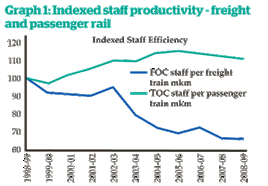
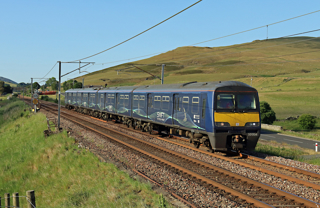
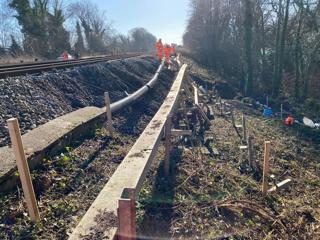
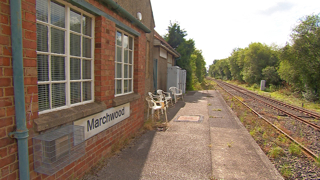
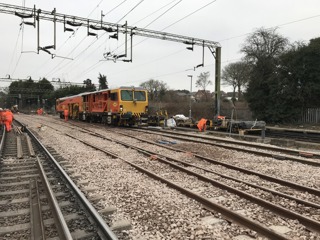
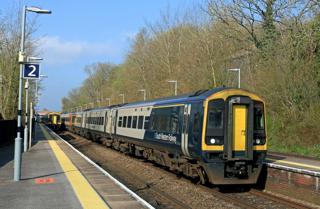

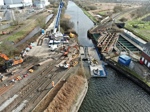







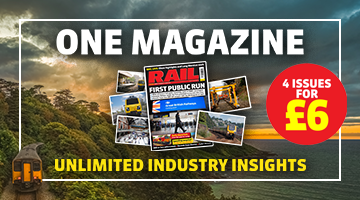


Login to comment
Comments
No comments have been made yet.